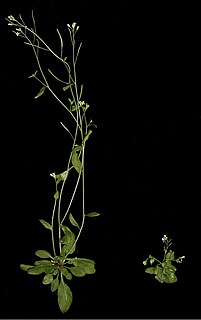
The bay leaf is an aromatic leaf commonly used in cooking. It can be used whole or in a dried or ground form.

Olive oil is a liquid fat obtained from olives, a traditional tree crop of the Mediterranean Basin, produced by pressing whole olives and extracting the oil. It is commonly used in cooking, for frying foods or as a salad dressing. It is also used in cosmetics, pharmaceuticals, and soaps, and as a fuel for traditional oil lamps, and has additional uses in some religions. The olive is one of three core food plants in Mediterranean cuisine; the other two are wheat and grapes. Olive trees have been grown around the Mediterranean since the 8th millennium BC.

The olive, known by the botanical name Olea europaea, meaning "European olive", is a species of small tree in the family Oleaceae, found traditionally in the Mediterranean Basin. The species is cultivated in all the countries of the Mediterranean, as well as South America, South Africa, China, Australia, New Zealand, Mexico, and the United States. Olea europaea is the type species for the genus Olea.

Excretion is a process in which metabolic waste is eliminated from an organism. In vertebrates this is primarily carried out by the lungs, kidneys, and skin. This is in contrast with secretion, where the substance may have specific tasks after leaving the cell. Excretion is an essential process in all forms of life. For example, in mammals, urine is expelled through the urethra, which is part of the excretory system. In unicellular organisms, waste products are discharged directly through the surface of the cell.

Plant hormones are signal molecules, produced within plants, that occur in extremely low concentrations. Plant hormones control all aspects of plant growth and development, from embryogenesis, the regulation of organ size, pathogen defense, stress tolerance and through to reproductive development. Unlike in animals each plant cell is capable of producing hormones. Went and Thimann coined the term "phytohormone" and used it in the title of their 1937 book.

Polyphenols are a large family of naturally occurring organic compounds characterized by multiples of phenol units. They are abundant in plants and structurally diverse. Polyphenols include flavonoids, tannic acid, and ellagitannin, some of which have been used historically as dyes and for tanning garments.

Kale, or leaf cabbage, belongs to a group of cabbage cultivars grown for their edible leaves, although some are used as ornamentals. Kale plants have green or purple leaves, and the central leaves do not form a head. Kales are considered to be closer to wild cabbage than most of the many domesticated forms of Brassica oleracea.

Eugenol is an allyl chain-substituted guaiacol, a member of the allylbenzene class of chemical compounds. It is a colorless to pale yellow, aromatic oily liquid extracted from certain essential oils especially from clove oil, nutmeg, cinnamon, basil and bay leaf. It is present in concentrations of 80–90% in clove bud oil and at 82–88% in clove leaf oil. Eugenol has a pleasant, spicy, clove-like scent. The name is derived from Eugenia caryophyllata, the former Linnean nomenclature term for cloves.

A plant cutting is a piece of a plant that is used in horticulture for vegetative (asexual) propagation. A piece of the stem or root of the source plant is placed in a suitable medium such as moist soil. If the conditions are suitable, the plant piece will begin to grow as a new plant independent of the parent, a process known as striking. A stem cutting produces new roots, and a root cutting produces new stems. Some plants can be grown from leaf pieces, called leaf cuttings, which produce both stems and roots. The scions used in grafting are also called cuttings.

3-Methylbutanoic acid, also known as β-methylbutyric acid or more commonly isovaleric acid, is a branched-chain alkyl carboxylic acid with the chemical formula (CH3)2CHCH2CO2H. It is classified as a short-chain fatty acid. Like other low-molecular-weight carboxylic acids, it has an unpleasant odor. The compound occurs naturally and can be found in many foods, such as cheese, soy milk, and apple juice.

Phenoxy herbicides are two families of chemicals that have been developed as commercially important herbicides, widely used in agriculture. They share the part structure of phenoxyacetic acid.

Hydroxytyrosol is a phenylethanoid, a type of phenolic phytochemical with antioxidant properties in vitro. In nature, hydroxytyrosol is found in olive leaf and olive oil, in the form of its elenolic acid ester oleuropein and, especially after degradation, in its plain form.

Maslinic acid is a compound derived from dry olive-pomace oil which is a byproduct of olive oil extraction. It is a member of the group of triterpenes known as oleananes.

Oleuropein is a glycosylated seco-iridoid, a type of phenolic bitter compound found in green olive skin, flesh, seeds, and leaves, and argan oil. The term oleuropein is derived from the botanical name of the olive tree, Olea europaea.

Olive leaf is the leaf of the olive tree. Although olive oil is well known for its flavor and possible health benefits, the leaf and its extracts remain under preliminary research with unknown effects on human health.

Syringic acid is a naturally occurring phenolic compound and dimethoxybenzene that is commonly found as a plant metabolite.

Phenylpyruvic acid is the organic compound with the formula C6H5CH2C(O)CO2H. It is a keto acid.

In biochemistry, naturally occurring phenols refers to phenol functional group that is found in natural products. Phenolic compounds are produced by plants and microorganisms. Organisms sometimes synthesize phenolic compounds in response to ecological pressures such as pathogen and insect attack, UV radiation and wounding. As they are present in food consumed in human diets and in plants used in traditional medicine of several cultures, their role in human health and disease is a subject of research. Some phenols are germicidal and are used in formulating disinfectants.

Eryngium planum, the blue eryngo or flat sea holly, is a species of flowering plant in the family Apiaceae, native to the area that includes central and southeastern Europe and central Asia. It is an herbaceous perennial thistle growing to 50 cm (20 in) with branched silvery-blue stems, and numerous small blue conical flowerheads surrounded by spiky bracts in summer.



















